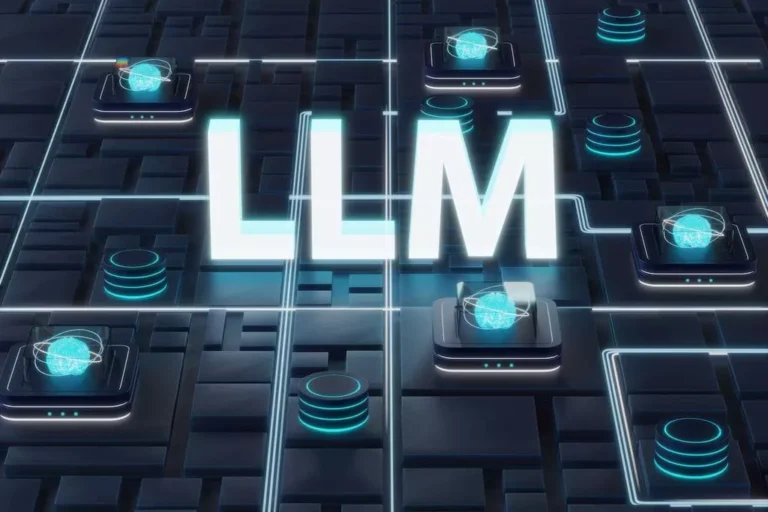In Recurrent Neural networks, the data cycles by way of a loop to the middle hidden layer. Neural Networks is considered one of the most popular machine studying algorithms and likewise outperforms different algorithms in both accuracy and pace. Therefore it turns into crucial to have an in-depth understanding of what a Neural Network is, how it’s ai networking made up and what its reach and limitations are. Because of its less complicated structure, GRUs are computationally more environment friendly and require fewer parameters compared to LSTMs. This makes them faster to coach and sometimes more appropriate for sure real-time or resource-constrained functions. FNNs are good for functions like image recognition, where the duty is to categorise inputs based on their features, and the inputs are handled as independent.
Multilayer Perceptrons And Convolutional Neural Networks
While RNNs provide highly effective capabilities, they also have limitations, including computational demands and potential struggles with very lengthy sequences. Addressing these challenges requires meticulous hyperparameter tuning, careful knowledge rnn applications preparation, and techniques like regularization. In the context of the case study, the place the objective is to predict electrical energy consumption utilizing Recurrent Neural Networks (RNNs), these results spotlight the need for further fine-tuning.
- The output will all the time be piecewise linear (with ReLU), however the overall form can change utterly.
- The authors (including Y. Bengio) suggest simplified variations of LSTM and GRU that enable parallel training, and show sturdy outcomes on some benchmarks.
- To practice the RNN, we need sequences of fastened size (seq_length) and the character following every sequence as the label.
- Additionally, time collection regression introduces a predictive dimension, permitting you to forecast numerical values primarily based on historical data and the influence of different variables.
- Transformers can seize long-range dependencies rather more effectively, are simpler to parallelize and perform better on duties similar to NLP, speech recognition and time-series forecasting.
- They are composed of layers of synthetic neurons — community nodes — that have the flexibility to process input and forward output to other nodes in the network.
Wanting To Learn About How Behavioral Science Might Help Your Organization?
This looping mechanism permits RNNs to have a sense of memory and to course of sequences of knowledge. But even this will fail as a end result of what if in our test information we get a sentence whose whole number of words is bigger than 5. Also this uses lots of memory as a end result of for instance if the corpus is of words then representing each word with a vector of parts consumes plenty of reminiscence, and also most variety of vectors shall be zero padded. The problematic problem of vanishing gradients is solved via LSTM as a end result of it retains the gradients steep enough, which keeps the training comparatively quick and the accuracy excessive. This memory could be seen as a gated cell, with gated which means the cell decides whether or to not retailer or delete data (i.e., if it opens the gates or not), based on the importance it assigns to the data.
Lengthy Short-term Reminiscence (lstm) And Gated Recurrent Unit (gru)

An RNN can deal with sequential data, accepting the present input data, and beforehand obtained inputs. Additional stored states and the storage beneath direct control by the community could be added to each infinite-impulse and finite-impulse networks. Another community or graph can even replace the storage if that incorporates time delays or has feedback loops.
The Structure Of A Conventional Rnn
This is as a outcome of LSTMs comprise information in a reminiscence, very similar to the memory of a computer. The models of an LSTM are used as building items for the layers of an RNN, typically referred to as an LSTM community. To understand the idea of backpropagation through time (BPTT), you’ll want to know the ideas of ahead and backpropagation first.
We then repeat this course of time and again many instances till the network converges and its predictions are eventually consistent with the coaching data in that appropriate characters are at all times predicted subsequent. RNNs are significantly well-suited for duties that involve sequential knowledge, such as language modeling, speech recognition, machine translation, and sentiment analysis. They excel at capturing long-term dependencies and can generate predictions or make selections primarily based on the context of the whole sequence.
Its purpose is to ensure that the output could be interpreted as a likelihood (given that use the right statistical loss), which implies squashing the quantity. The inverse is not true, if I take random numbers from the web and squash them to `[0,1]` I do not go name them probabilities. Technically the output continues to be what a statistician would name “linear within the parameters”, but because of the universal approximation theorem it could approximate any non-linear function. Followed by “in some sense it is [ReLU] nonetheless even MORE linear than tanh or sigmoid functions are”. There’s no means you misunderstood that sentence, or took it as my “definition” of linearity…so I guess you simply wished to reaffirm I was appropriate, once more, so thanks. ReLU enables this by being nonlinear in a easy means, particularly by outputting zero for negative inputs, so each linear unit can then limit its contribution to a portion of the output curve.
The word “recurrent” is used to explain loop-like buildings in anatomy. Hebb considered “reverberating circuit” as an explanation for short-term memory.[11] The McCulloch and Pitts paper (1943), which proposed the McCulloch-Pitts neuron mannequin, thought of networks that incorporates cycles. Neural suggestions loops have been a standard subject of debate on the Macy conferences.[15] See [16] for an in depth review of recurrent neural network models in neuroscience.
Additionally, advanced methods like Seasonal Autoregressive Integrated Moving Average (SARIMA) or Prophet can be utilized to model and forecast non-stationary time series. The overlook gate realizes there could be a change in context after encountering the primary full cease. The subsequent sentence talks about John, so the data on Alice is deleted. The most evident reply to that is the “sky.” We don’t want any further context to foretell the last word within the above sentence. RNNs process enter sequences sequentially, which makes them computationally environment friendly and straightforward to parallelize.
The thought of encoder-decoder sequence transduction had been developed in the early 2010s. They became cutting-edge in machine translation, and was instrumental within the growth of attention mechanism and Transformer. As an example, let’s say we wanted to foretell the italicized words in, “Alice is allergic to nuts. She can’t eat peanut butter.” The context of a nut allergy may help us anticipate that the meals that can not be eaten accommodates nuts. However, if that context was a couple of sentences prior, then it might make it tough or even unimaginable for the RNN to attach the knowledge.

These parameters remain consistent throughout all time steps, enabling the network to model sequential dependencies more efficiently, which is important for duties like language processing, time-series forecasting, and more. Bidirectional recurrent neural networks (BRNNs) are another kind of RNN that concurrently learn the ahead and backward instructions of information flow. This is different from normal RNNs, which solely learn information in one direction. The process of both directions being discovered simultaneously is named bidirectional information flow.
The looping structure allows the network to retailer past info in the hidden state and operate on sequences. As time series information becomes extra complicated and various, advanced methods are important to boost the capabilities of Recurrent Neural Networks (RNNs). Multi-variate time series data featuring multiple interconnected variables may be effectively handled by extending RNNs to accommodate multiple input features and output predictions. Incorporating consideration mechanisms refines RNN predictions by prioritizing relevant time steps or features, particularly in longer sequences. Each word in the phrase “feeling under the weather” is a half of a sequence, the place the order issues. The RNN tracks the context by maintaining a hidden state at each time step.
Data preparation is essential for accurate time sequence predictions with RNNs. Handling lacking values and outliers, scaling data, and creating appropriate input-output pairs are essential. Seasonality and development removal help uncover patterns, while selecting the proper sequence length balances short- and long-term dependencies. The key thought behind RNNs is that the hidden state at each time step serves as a abstract or representation of all of the previous inputs seen up to that point. This hidden state permits the network to capture information about the context and temporal dynamics of the info.
In handwriting recognition, for example, FNNs only must identify the unbiased options of each character and never the sequence of strokes. Attention mechanisms improve RNNs by specializing in related time steps or features throughout predictions. They improve accuracy and interpretability, particularly in lengthy sequences. Combining RNNs with other fashions, like the convolutional neural network model CNN-RNN or Transformer-RNN, Artificial Neural Networks ANN-RNN, could additional enhance efficiency for time series duties. Fully recurrent neural networks (FRNN) join the outputs of all neurons to the inputs of all neurons. This is the most basic neural network topology, because all other topologies could be represented by setting some connection weights to zero to simulate the shortage of connections between those neurons.
A single perceptron can’t modify its own construction, so they are typically stacked together in layers, where one layer learns to recognize smaller and extra particular options of the data set. In a typical artificial neural network, the forward projections are used to foretell the future, and the backward projections are used to judge the previous. Consider utilizing RNNs if you work with sequence and time-series information for classification and regression tasks. RNNs also work nicely on movies as a outcome of movies are essentially a sequence of photographs. Similar to working with indicators, it helps to do feature extraction before feeding the sequence into the RNN.
Transform Your Business With AI Software Development Solutions https://www.globalcloudteam.com/ — be successful, be the first!
